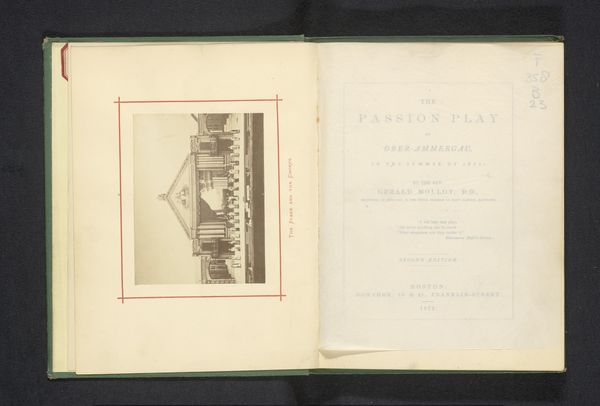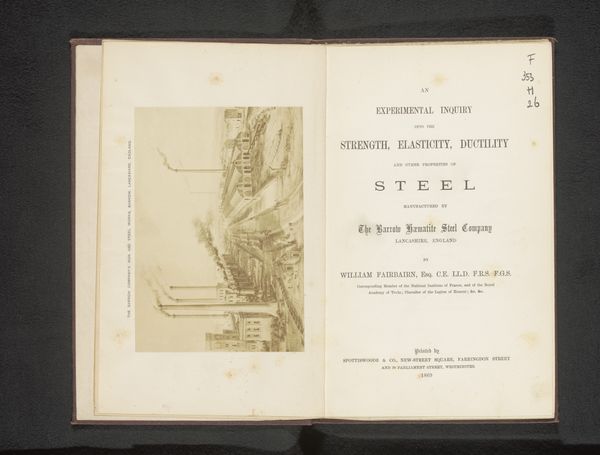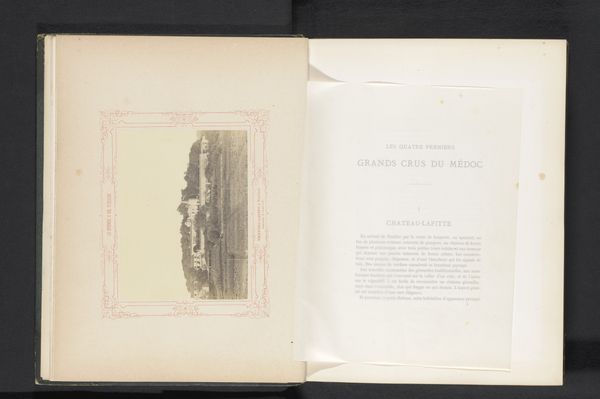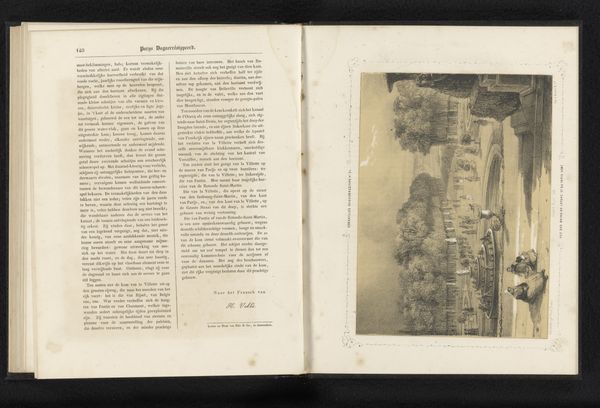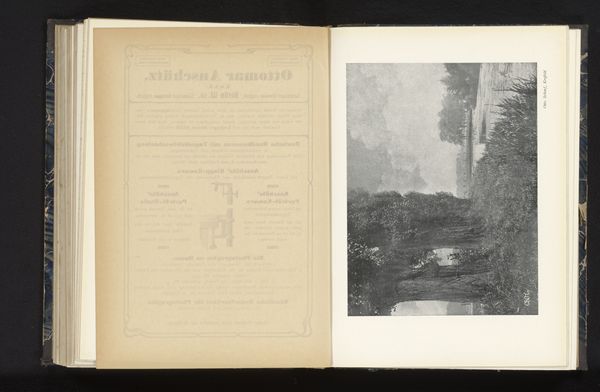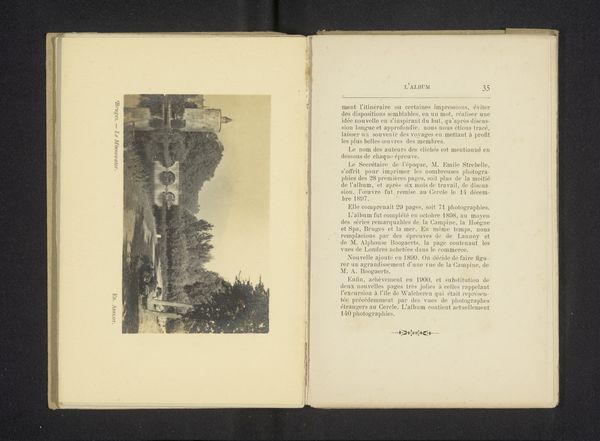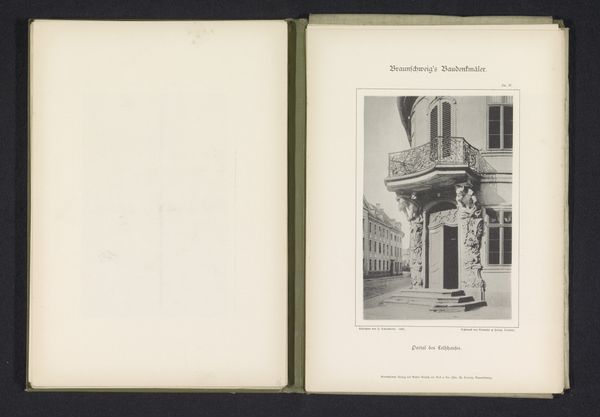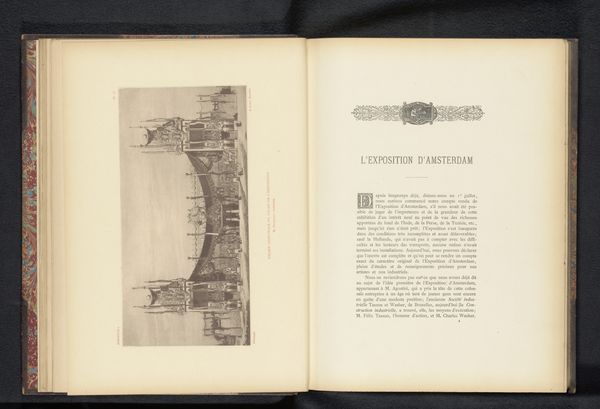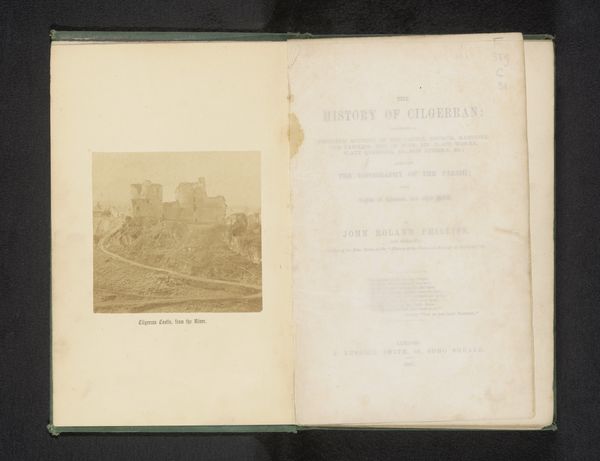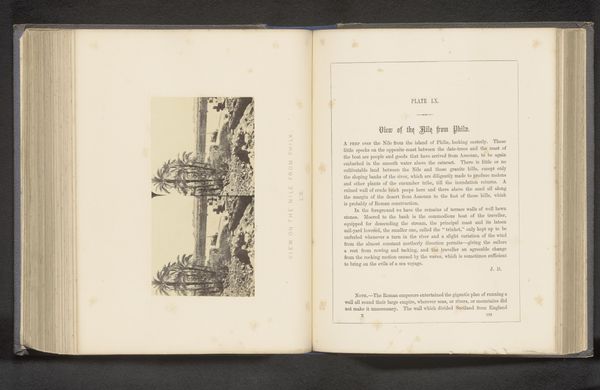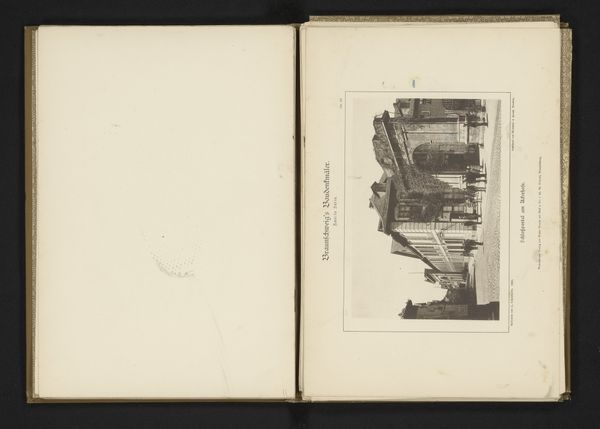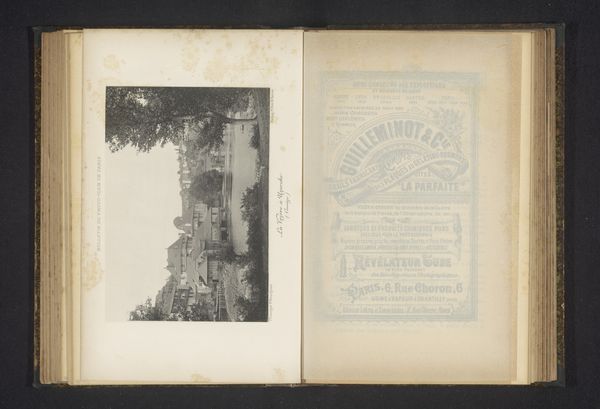
Histoire de l'abbaye de Waulsort et du prieuré d'Hastière, de l'ordre de Saint-Benoît 1883
0:00
0:00
print, paper, engraving
#
aged paper
#
homemade paper
#
paper non-digital material
#
reduced colour palette
#
muted colour palette
#
paperlike
# print
#
white palette
#
paper texture
#
paper
#
text
#
personal sketchbook
#
history-painting
#
engraving
#
columned text
Dimensions: height 24 mm, width 135 mm, thickness 12 mm
Copyright: Rijks Museum: Open Domain
Here we have an illustration from M. l'Abbé Toussaint’s "Histoire de l'abbaye de Waulsort," printed in 1883, which depicts the Abbey of Waulsort, a Benedictine monastery. The abbey, perched by the river, isn't merely a structure of stone but a vessel of sacred history. The Benedictine order's cross, though not visually explicit, resonates through the architecture. We see echoes of the cross in the geometric layout of the buildings, a silent yet potent symbol of sacrifice and redemption. This symbol has crossed millennia, from the early Christian catacombs to the grand basilicas of Rome. Consider the symbolic weight of enclosure. Walls, like those surrounding Waulsort Abbey, are not just physical barriers but psychological ones. They represent a retreat from the profane world, a space dedicated to introspection and spiritual pursuit. Such monastic walls recur throughout history—from the walled gardens of ancient Persia to the sacred precincts of Japanese Zen temples. In this illustration, we glimpse the enduring human quest for meaning and refuge, manifested in stone and scripture. The image taps into our collective memory of seeking solace, engaging our subconscious with the timeless allure of sanctuary. The sacred walls of Waulsort, like so many before and after, invite a journey inward.
Comments
No comments
Be the first to comment and join the conversation on the ultimate creative platform.
